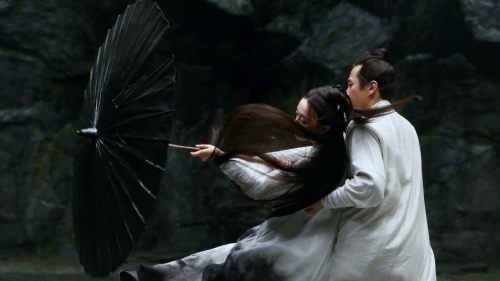Translating CRAZY RICH ASIANS From Book To Screen
Crazy Rich Asians comes out this week. Get your tickets here!
Thank goodness the movie adaptation of Crazy Rich Asians did not go through with a producer’s insistence to change—whitewash—the leading Asian American protagonist into a white woman. That would have diluted the intents of its source material in favor of enforcing Hollywood’s white-centrism. Especially considering this adaptation is pronounced about its heroine’s Asian American identity, namely of Chinese American Rachel Chu, played by Constance Wu. After all, much of the conflict derives from her boyfriend’s Singaporean mother deeming her not Asian enough for her son.
Adapting the 2013 Kevin Kwan bestseller of the same name took some meticulous decisions. The film is marketed as a Hollywood rom-com as it upholds its root in the satirical nature of Kwan’s novel. Kwan’s book offers quite a tour, through Rachel’s eyes, into the prim and frenetic wackiness of upper-crust personalities in Singapore’s elite circles and this adaptation plays it up through the enormity and opulence of the setting. At the heart of the chaos, Rachel operates as an audience surrogate, reacting with awe—and mortification—at the extravagance of the old money circle in Singapore. True to the mock-epic material, director Jon M. Chu shoots the scope of outrageousness.
A literal interpretation of Kwan’s Crazy Rich Asians book trilogy perhaps would be worth a miniseries, so compressing a book for one film was necessary. As a hefty 500-page book, plenty of passages devote themselves to wealthy shenanigans, gossip, petty fights, conspiracies to meddle in relationships, subplots of adultery and fashion rants. By excising some subplots, the movie sharpens the focus on Rachel Chu and Eleanor Young’s dynamic, with the latter operating as an icy but rounded-out antagonist to Rachel and Nick’s union.
Seeking to emphasize the hold a Chinese mother would have on her son, screenwriters Adele Lim and Peter Chiarelli grace Eleanor Young with a culturally self-preservationist motive to her chilliness to Rachel. Michelle Yeoh’s performance illustrates a Chinese mother insecure about her motherhood to Nick. Her backstory, which is mentioned in passing in Kwan’s text, is given more pause in the movie over the folding of dumplings, a culinary sequence that was not in the book. Here, Eleanor cools down in a moment of honest vulnerability over her attempts to be the ideal Chinese mother and wife to her mother-in-law. Compared to the book, she’s a little warmer and sometimes admiring of Rachel’s gumption even while stoking her austerity and skepticism. The face-to-face between Rachel and Mrs. Young has a heavier emphasis on an “Asian American versus Singaporean-Asian” tension. It isn’t Rachel’s lack of class and wealth that mortifies Eleanor as it is Rachel’s Americanism. Because in Eleanor’s eyes, Americans would not have an intimate understanding of the cultural importance of family. But boy does Rachel prove her wrong.
Rachel’s wits are permitted more effect on the plot, particularly regarding the obligatory break-up rom-com trope. Constance Wu’s Rachel is introduced as a game player in the economics classroom where she teaches. With her game-playing astuteness, Rachel maneuvers Nick’s familial dilemma to the win-win spectrum. In the book, Nick uses his wealth to conduct events to restore their relationship. The movie modifies the inevitable rom-com reconciliation by providing Rachel agency over romantic gestures. It isn’t Nick’s efforts that define the resolution of the conflict but Rachel’s ultimatum to Nick’s mother over a game of Mahjong, which like the dumpling sequence is an addition from the book to bring Rachel closer to Eleanor.
Speaking of which, movie Rachel goes from handling Blackjack cards in America to shuffling Mahjong tiles. In the latter scenario, there is an affirmation of the immigrant story inherent from the source material. Had Crazy Rich Asians centralized around White Rachel, this would have removed the cultural intents of the hypothetical White Rachel purporting to understand her Chinese loved one’s connection to his heritage. The White Rachel leaving her fingerprints on the Young’s family dumplings and calling it “fun” would not have the cultural resonance of an Asian American woman undergoing reverse cultural shock. The White Rachel playing mahjong with a Chinese mother would reek of a white woman claiming she knows about the order of Eastern culture. White Rachel would have removed the dimensions of a Chinese American woman exploring and reclaiming her heritage. Crazy Rich Asians makes some good choices translating its text to the big screen. And it certainly avoids a disastrous one.



